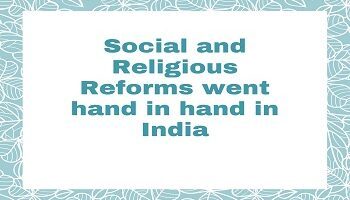Table of Contents
Maratha Kingdom:
Shivaji (1627-1680):
- Belonged to the Bhonsle clan of Marathas.
- Born at Shivner to Shahji and Jija Bai, into the family of a military commander under the Nizam Shahi rulers of Ahmadnagar, who later shifted loyalties to Bijapur.
- In 1637, he received the Jagir of Poona from his father but it was only in 1647 after the death of his Guardian, Dadaji Kondadeva, that Shivaji could control it on his own.
- In 1646, he captured Raigarh, Kondana and Torna from Bijapur, apart from Chakan and Purandhar.
- 1656- the conquest of Jarli from Chandra Rao, more a Maratha Chief and also acquired port towns of Kalyana and Bhivandi.
- 1659– murdered Afzal Khan with tiger claws, who was sent by Ali Adil Shah of Bijapur.
- Shaista Khan, the viceroy of Mughal Deccan was sent by Aurangzeb in 1660 to strike at the Maratha territories.
- 1663- Shivaji carried a night attack on the camp of Shaista Khan, who after this defeat was transferred to Bengal as a punishment. Meanwhile, Shivaji plundered Surat (1664) and Ahmadnagar.
- 1665- Aurangzeb then sent Mirza Raja Jai Singh of Amber and Diler Khan against Shivaji who sued for peace through the Treaty of Purandhar and surrendered 23 out of 35 forts that he held.
- Shivaji’s son Sambhaji was awarded a mansab of 5000.
- 1666- Shivaji visited Agra and was imprisoned. But he managed to escape from the Mughals.
- 1670- second plunder of surat.
- 1674- he was coronated at Raigarh and assumed the title of ‘Maharaja Chattrapati‘ and ‘Haindava Dharmodharak‘.
- 1676-79- Conquered Jinjee, Vellore etc. from the Bijapur kingdom in alliance with the Qutb-Shahis of Golconda, but did not share the promised territories with the latter.
- 1680- Shivaji died.
- Sambhaji (1680-89) succeeded Shivaji but he was a man of loose morals and was widely unpopular.
- Kavikalash, a brahmin was his counseller.
- Prince Akbar, the rebellious son of Aurangzeb took shelter at Sambhaji’s court and led to the execution of the Latter at Sangameshwar in 1689 by Muqqarrab Khan, the Mughal Governor.
- Yesubai, the widow of Sambhaji could not protect the fort of Raigarh and she along with her son, Shahu were made prisoners.
Rajaram (1689-1706):
- Coronated at Raigarh but he shifted his headquarters to Jinjee, where devoted Maratha Leaders like Ramachandra Pant, Prahlad Niraji, Dhanaji Jadhav etc. created havoc among the Mughals.
- When Jinjee also felt to Mughals (1698), Satara was made the capital.
- On his death, Rajaram’s wife, Tarabai became the regent of her infant son, Shivaji II.
- Shivaji II and Tarabai (1700-1707) together attached Berar, Baroda and Aurangabad.
- 1707- Azam Shah the son of Aurangzeb released Shahu, as his advisor Zulfikar Khan felt that it would lead to a civil war among the Marathas.
Shahu (1707-1749):
- After Tarabai was defeated at the Battle of Khed (1707), Shahu occupied the throne at Satara and hence began a long drawn civil war till 1714.
- Rajaram’s descendants and his second wife, Rajabai imprisoned Tarabai and her son Sambhaji II and started to rule from Kolhapur.
- This was sanctioned by the Treaty of Warna in 1731 and Kolhapur began to be called the Southern Maratha confederacy.
Maratha Kingdom Administration:
- Based on the pattern adopted by Malik Amber in Ahmadnagar and Mahmud Gawan in Bahmani Kingdom.
- The Maratha Kingdom was called Swarajya or Mulk-e-Kadim.
- Provinces were called Mahal or Subah.
- The Maratha collected Chauth or 1/4th of the land revenue.
- The Sardeshmukhi or 1/10th of the standard land revenue was imposed on the entire population of a village or town in token of their recognition of the Maratha king as their Sardeshmukh or Suzerain.
- Central Administration was unique in the sense that the Ashtapradhan were a council of Minister who were individually and not collectively responsible to king Shivaji.
- They Were-
- Peshwa– Finance and general administration. Later he became the prime minister.
- Majumdar or Amatya- Accountant General. Later Finance Minister.
- Sar-i-Naubat or Senapati- Military commander, an honorary post.
- Waqenavis- Intelligence and household affairs.
- Sachiv or Surunavis or Chitnis- Royal correspondence in-charge.
- Dabir or Sumanta- Master of ceremonies.
- Nyayadish- Justice. Both Civil and Criminal cases.
- Pandit Rao- Charities and religious administration.
- Rajaram created the new post of ‘Pratinidhi‘.
- All ministers except Pandit Rao and Nyayadhish participated in the war.
- The Swarajya was divided into revenue divisions called prants and the Revenue officials were Deshmukhs, Deshpandes, Patils and Kulkarnis.
- Out of the revenues of Chauth-
- 25%- Zabti (to central government).
- 66%- to Mokasa and Saranjam.
- 6%- to Sahotra granted to Sachiva.
- 3%- to Nadgauda.
- Saranjami System was a system of revenue grants given to soldiers instead of their salaries.
- The regular army consisted of about 30000 to 40000 cavalry supervised by havaildars.
- They were given fixed salaries.
- There were two divisions in the Maratha cavalry –
- Bargirs– equipped and paid by the state.
- Silahdars- maintained by the nobles.
- In the infantry, the Mavli foot soldiers played an important role.
- Shivaji also maintained a navy.
- By the end of his reign, Shivaji had about 240 forts.









Comments (No)